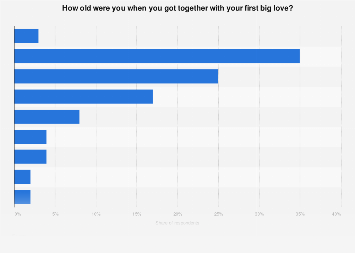
Navigating the world of romantic relationships can be a complex journey, especially during adolescence. The age at which individuals first experience a romantic relationship is a significant milestone that often sparks curiosity and discussion. While there’s no one-size-fits-all answer, understanding the average age for first relationship can offer valuable insights into adolescent development and evolving social norms. This article delves into the factors influencing this average age, explores its connection to adolescent development, and examines current social trends shaping teen relationships.
This exploration will encompass various aspects of romantic relationships in adolescence, including the typical average age of first relationship, the influential factors that contribute to this milestone, and how societal shifts impact dating patterns among teenagers.
Average Age for First Relationship
The average age for first relationship typically falls between 14 and 16 years old. This range can vary depending on cultural norms, individual experiences, and personal preferences. Some individuals may enter their first romantic relationship earlier or later than this average, and there’s a wide spectrum of normal when it comes to dating milestones.
It’s important to note that the average age of first relationship is just a statistical indicator and doesn’t dictate an individual’s readiness for romance. Maturity levels, emotional preparedness, and personal circumstances all play crucial roles in determining when someone feels comfortable embarking on a romantic relationship.
While societal pressures and peer influence can sometimes contribute to earlier dating experiences, it’s essential for individuals to prioritize their own emotional well-being and make decisions that align with their personal values and readiness.
Factors Influencing Romantic Relationships

Numerous factors can influence the age at which individuals enter their first romantic relationship. These factors often intertwine and create a complex web of influences:
Social Environment
The social environment plays a significant role in shaping dating norms and expectations. Peer pressure, cultural beliefs, and societal attitudes towards relationships can all impact when teenagers feel comfortable exploring romance.
Family Dynamics
Family dynamics and parental guidance can also influence the age at which individuals start dating. Open communication within families, clear boundaries set by parents, and a supportive environment can contribute to healthy relationship development. Conversely, restrictive family rules or lack of communication may delay romantic experiences.
Individual Personality and Maturity
Individual personality traits, emotional maturity, and personal values significantly influence when someone feels ready for a romantic relationship. Some individuals may be naturally more outgoing and eager to explore relationships, while others may prefer to focus on other aspects of their lives before pursuing romance.
Adolescent Development and Dating
Adolescence is a period of significant physical, emotional, and social development. During this stage, teenagers are navigating complex changes, seeking independence, and forming their identities. Romantic relationships can play a role in this developmental process, offering opportunities for:
Emotional Growth
Dating experiences can provide opportunities for emotional growth, teaching individuals about empathy, communication, compromise, and handling conflict. Navigating the ups and downs of a relationship can help teenagers develop emotional intelligence and resilience.
Social Skills Development
Romantic relationships often involve social interactions, communication, and navigating group dynamics. These experiences can enhance social skills, build confidence, and foster a sense of belonging.
Social Trends in Teen Relationships

Social trends are constantly evolving, and the landscape of teen relationships is no exception.
Technology’s Impact
Technology has significantly impacted how teenagers connect and form relationships. Online dating apps, social media platforms, and instant messaging have become integral parts of modern dating experiences. While these technologies offer new avenues for connection, they also present challenges such as cyberbullying, privacy concerns, and the potential for unrealistic expectations.
Shifting Norms
Traditional dating norms are evolving, with teenagers exhibiting more fluidity in their relationship styles. Open communication, mutual respect, and shared values are increasingly emphasized over rigid gender roles or societal expectations.
Conclusion
The average age for first relationship provides a glimpse into adolescent development and social trends. While this average falls between 14 and 16 years old, individual experiences vary widely based on personal factors, social influences, and cultural norms. Understanding the complexities surrounding romantic relationships in adolescence is crucial for parents, educators, and individuals navigating this stage of life. By fostering open communication, promoting healthy relationship skills, and addressing evolving social trends, we can support teenagers as they embark on their journey of love and connection.
